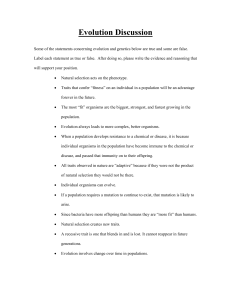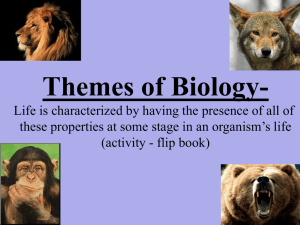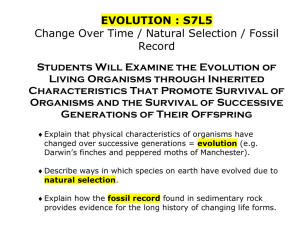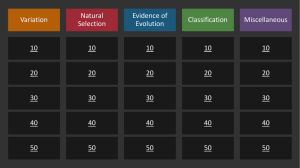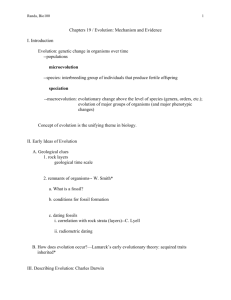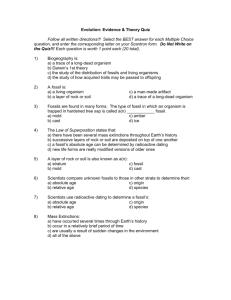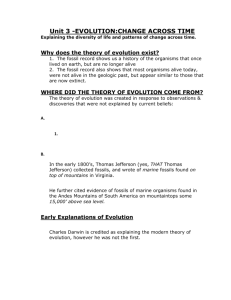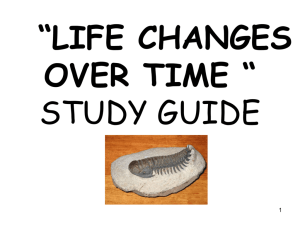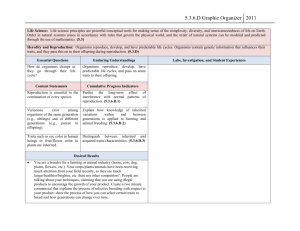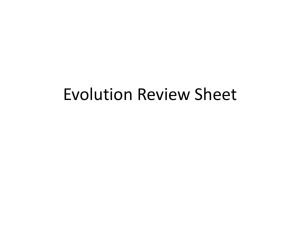Evolution
advertisement
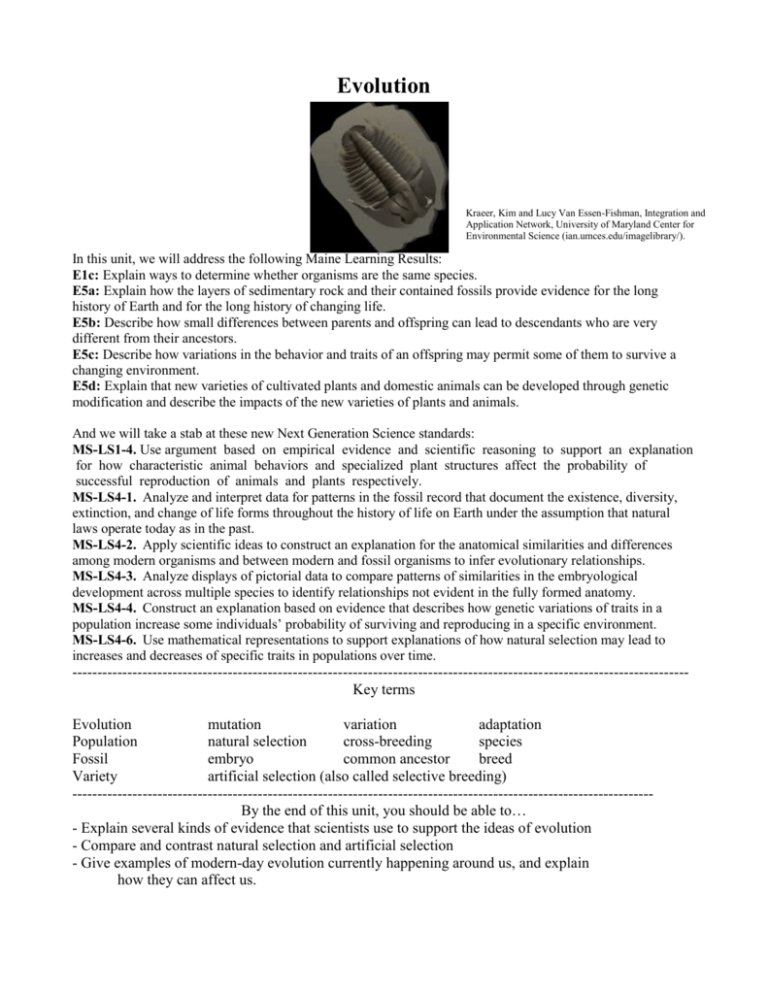
Evolution Kraeer, Kim and Lucy Van Essen-Fishman, Integration and Application Network, University of Maryland Center for Environmental Science (ian.umces.edu/imagelibrary/). In this unit, we will address the following Maine Learning Results: E1c: Explain ways to determine whether organisms are the same species. E5a: Explain how the layers of sedimentary rock and their contained fossils provide evidence for the long history of Earth and for the long history of changing life. E5b: Describe how small differences between parents and offspring can lead to descendants who are very different from their ancestors. E5c: Describe how variations in the behavior and traits of an offspring may permit some of them to survive a changing environment. E5d: Explain that new varieties of cultivated plants and domestic animals can be developed through genetic modification and describe the impacts of the new varieties of plants and animals. And we will take a stab at these new Next Generation Science standards: MS-LS1-4. Use argument based on empirical evidence and scientific reasoning to support an explanation for how characteristic animal behaviors and specialized plant structures affect the probability of successful reproduction of animals and plants respectively. MS-LS4-1. Analyze and interpret data for patterns in the fossil record that document the existence, diversity, extinction, and change of life forms throughout the history of life on Earth under the assumption that natural laws operate today as in the past. MS-LS4-2. Apply scientific ideas to construct an explanation for the anatomical similarities and differences among modern organisms and between modern and fossil organisms to infer evolutionary relationships. MS-LS4-3. Analyze displays of pictorial data to compare patterns of similarities in the embryological development across multiple species to identify relationships not evident in the fully formed anatomy. MS-LS4-4. Construct an explanation based on evidence that describes how genetic variations of traits in a population increase some individuals’ probability of surviving and reproducing in a specific environment. MS-LS4-6. Use mathematical representations to support explanations of how natural selection may lead to increases and decreases of specific traits in populations over time. --------------------------------------------------------------------------------------------------------------------------Key terms Evolution mutation variation adaptation Population natural selection cross-breeding species Fossil embryo common ancestor breed Variety artificial selection (also called selective breeding) -------------------------------------------------------------------------------------------------------------------By the end of this unit, you should be able to… - Explain several kinds of evidence that scientists use to support the ideas of evolution - Compare and contrast natural selection and artificial selection - Give examples of modern-day evolution currently happening around us, and explain how they can affect us.
